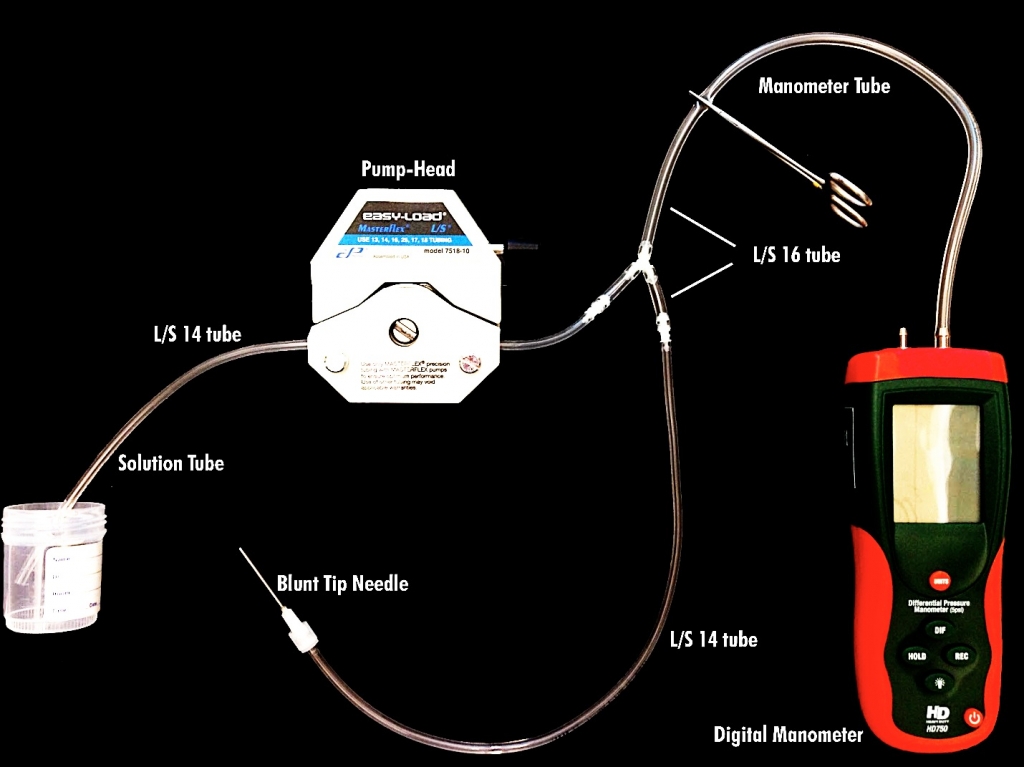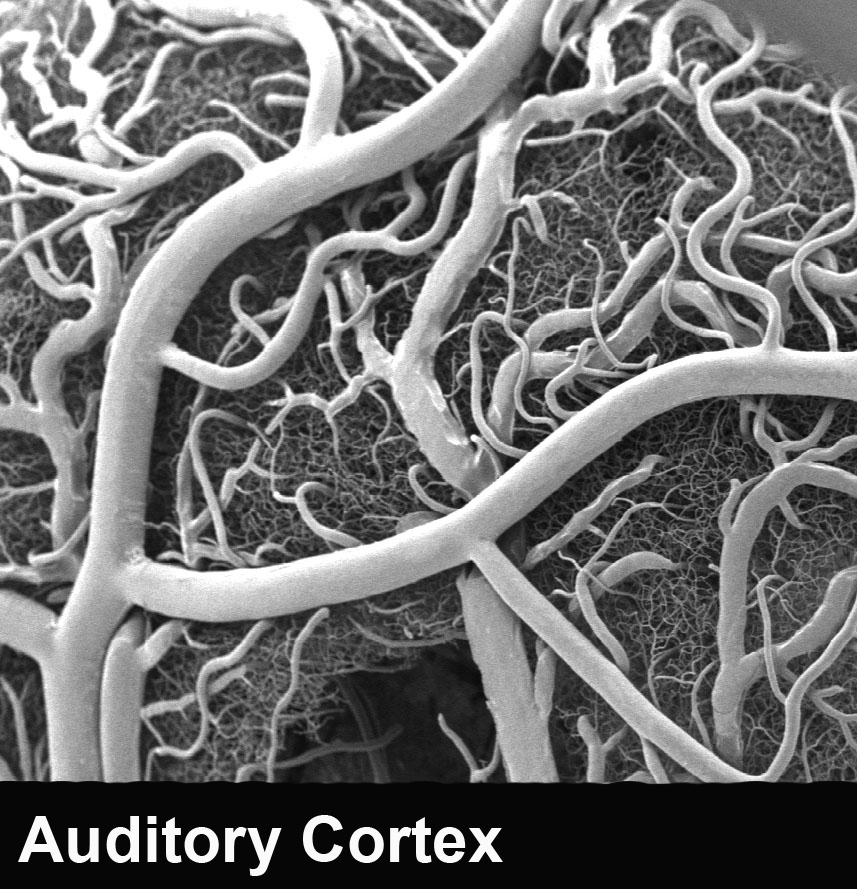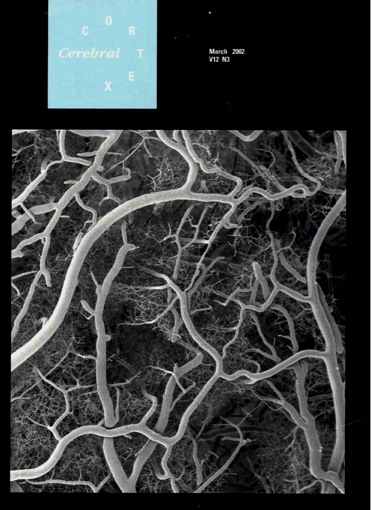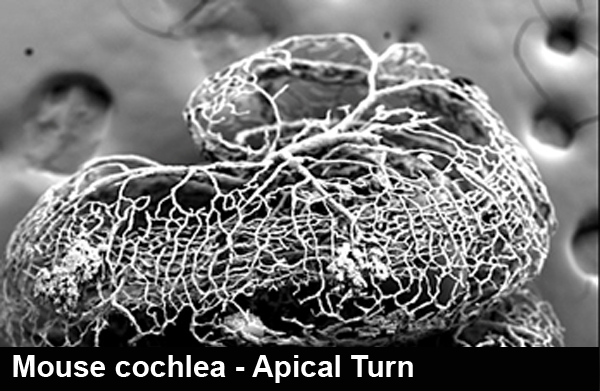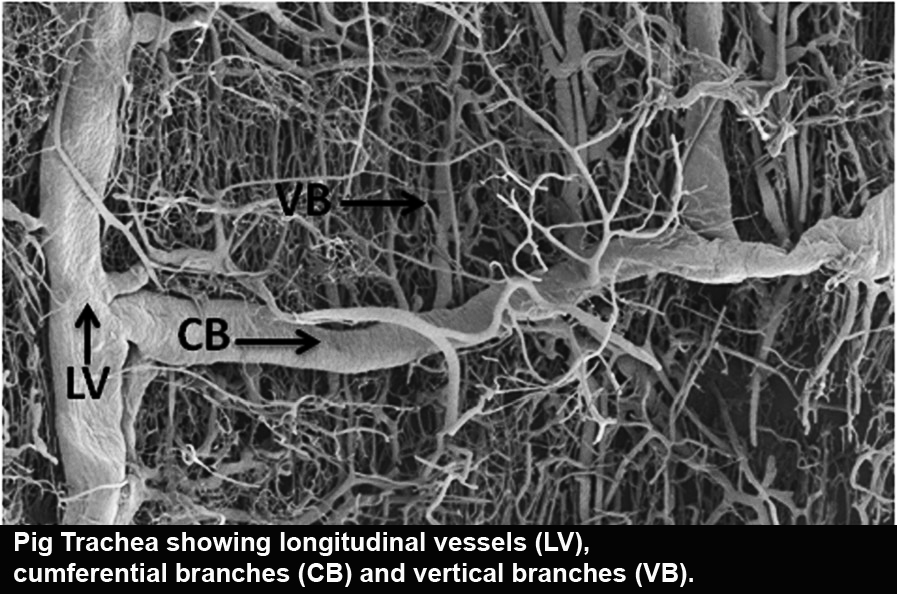Corrosion casting is a technique that can be applied to view the inner diameter of blood vessels and capillaries that run through out the body. This technique is extremely useful in measuring changes in vessel size, shape and any abnormalities that may occur as a result of disease or genetic mutations.
In our lab, we have used this technique to look at the brain, the cochlea and the trachea.
Perfusion
The corrosion casting technique involves perfusion of the subject whereby a polymer (mercox) replaces the blood in the circulatory system. The image on the right represents the set up we used during perfusion. A digital manometer is used to measure the changes in pressure levels while the monomer is pumped into the system. The pressure levels will begin to increase as the monomer polymerizes in the vessels. Care has to be taken not to let pressure levels increase too much as there will be leakage from smaller capillaries as the system tries to relieve the pressure.
Brain
Cochlea
Trachea
Our study on the microvasculature of the brain, specifically the auditory cortex, was to better understand the relationship between heamodynamics and neuronal activity. Since it is known that local neuronal activity in the brain tissue is coupled with an increase in local blood supply, our study confirmed that blood capillary density in the primary auditory cortex (A1) was significantly higher than blood capillary density in non-auditory regions.
Therefore, our study provides an anatomical correlation between the presence of vessel density gradients in the auditory cortex and corresponding responses to auditory evoked activity.
Using this new corrosion cast method together with SEM imaging we describe some important aspects of cochlear vasculature in the normal mouse cochlea including some details about the capillary structure of stria vascularis, the spiral limbus vessels i.e. the capillary beds within the spiral ganglion and organ of Corti and the arteriole feeding and venous drainage of strial and spiral ligament vessels. In this modiolar region, the delicate casts are very often completely collapsed in full corrosion samples. However retaining some of the modiolar structure provides support for these capillary networks.
This corrosion casting technique was also used for research on mouse models of presbycusis and cytomeglavirus (CMV) infection. Results from these two studies showed vascular degeneration in the C57BL/6 mouse with age-related hearing loss, and in Balb/C mice with hearing loss after intracerebral inoculation with murine CMV.
Corrosion casting techniques were used to understand the role of angiogenesis, hypoxia and ischemia in subglottic mucosal injury following endotracheal intubation. The degree of injury can range from mild mucosal erythema or ulceration to granuloma formation and airway stenosis.
Our study showed that subjects in the accelerated subglottic injury group had less overall angiogenic features and more overall hypoxic/degenerative features compared with controls.
References
Carraro M, Park A, Harrison RV. (2016) Partial corrosion casting to assess cochlear vasculature in mouse models of presbycusis and CMV infection. Hearing Research. 332 95-103.
Carraro M, Negandhi J, Kuthubutheen J, Propst E.J., Kus L.H., Lin V.Y.W. and Harrison R.V. Attenuating cardiac pulsations within the cochlea: Structure and function of tortuous vessels feeding Stra Vascularis. ISRN Otolaryngology. (2013) 2013:941757.
Kus L.H., Negandhi J., Sklar M.C., Eskander A., Estrada M, Harrison R.V., Campisi P., Forte V. and Propst E.J. Angiogenesis in costal cartilage graft laryngotracheoplasty: A corrosion cast study in piglets. The Laryngoscope. (2014) 124: 2411-2417.
Kus L.H., Sklar M.C., Negandhi J., Estrada M., Eskander A., Harrison R.V., Campisi P, Forte V. and Propst E.J. Corrosion casting of the subglottis following endotracheal tube intubation injury: a pilot study in Yorkshire piglets. J. Otolarynology – Head and Neck Surg. (2013) 42:52.
Licup-Bravo A.T.D., Mount R.J., Minnich B., Lametschwandtner A. and Harrison R.V. Microvascular characteristics of auditory cortex: A corrosion cast study. Microsc. Microanal. (2005) 11(suppl 2): 176- 177.
Mount R.J., Licup-Bravo A.T.D., Pienkowski M., Daniel S. and Harrison R.V. Changes to Vascular Supply of Auditory Cortex Following Chronic Conductive Hearing Loss. Microsc. Microanal. (2005) 11(suppl 2): 1214- 1215.
Harrison RV, Harel N, Panesar J, Mount RJ. Blood capillary distribution correlates with hemodynamic based functional imaging in cerebral cortex. Cereb Cortex (2002)12: 225-233.

